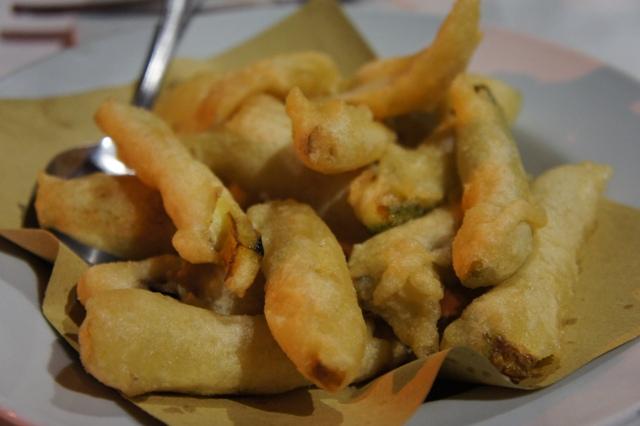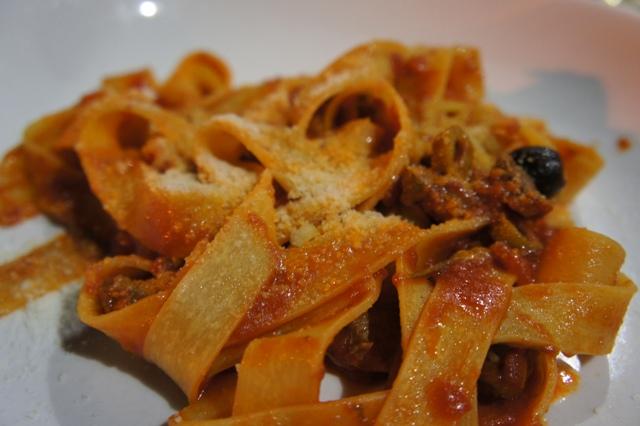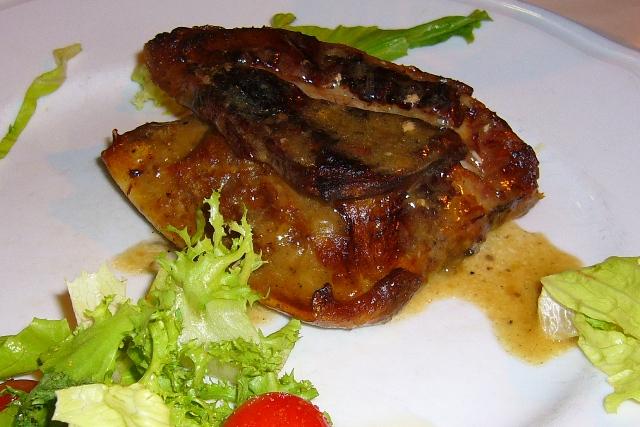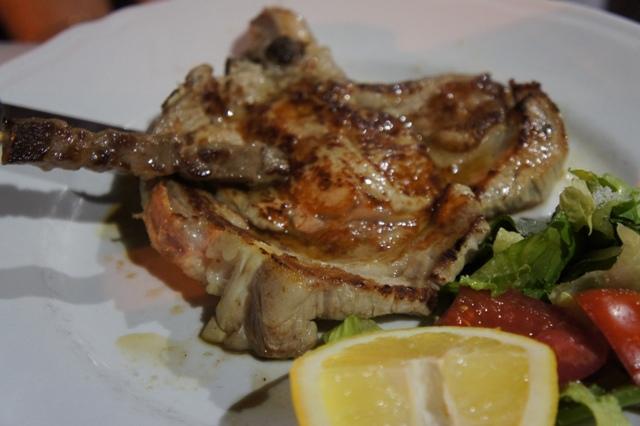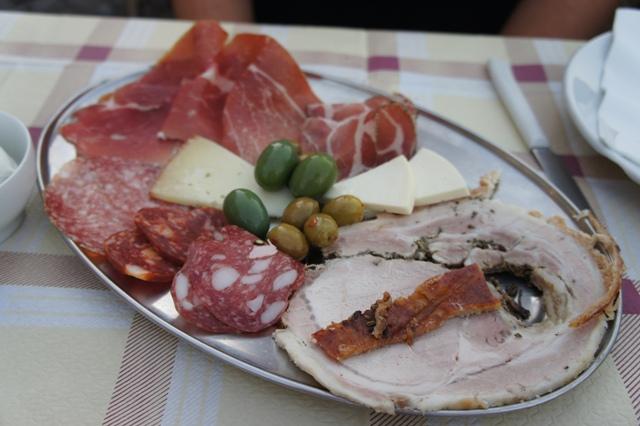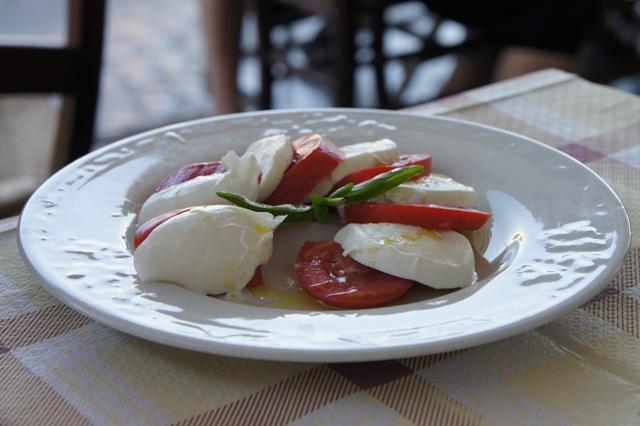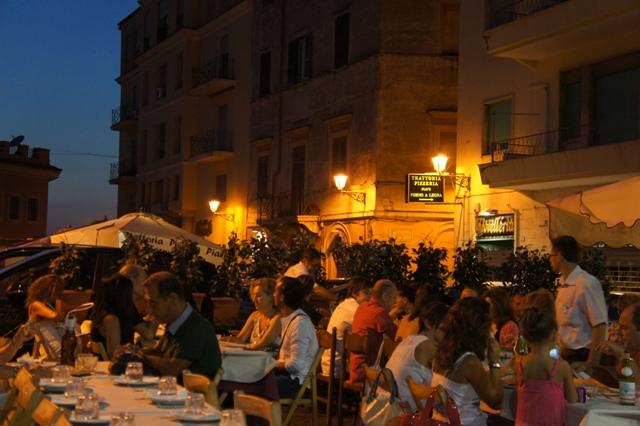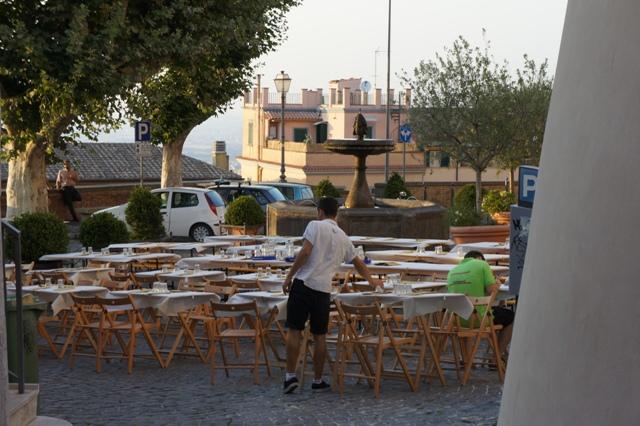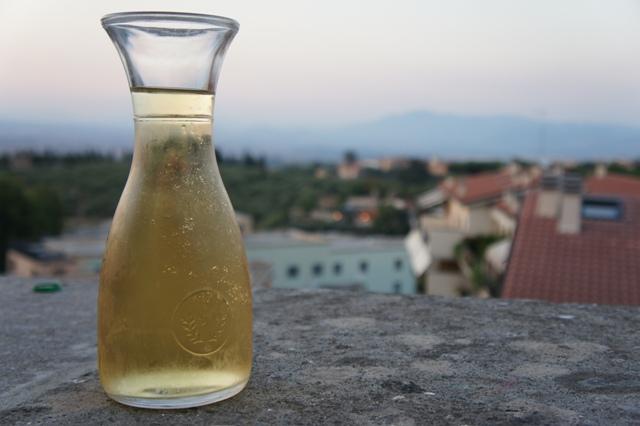Search the Community
Showing results for tags 'Italian'.
-
I am looking for cookbooks that feature recipes and cuisine from the Northern region of Italy. ( My ancestors originate from Torino. ) I am looking for 'light' or healthier versions of traditional northern Italian recipes. Any recommendations?
-
So I am sat here watching Masterchef professionals and they complained about how someones pasta is too thick. How can you make pasta too thick? Given you just keep turning the dial to make it thinner and thinner till the lowest setting how is this possible and especially for a professional? I'm more interested because I might be missing a trick to make my pasta thinner! Thanks, Paul
-
We had a week in Frascati at the end of August. We have been here a few times and stay at Villa Grazioli. It is handy for Rome but it is a different place. I like Frascati. It has plenty of casual places to eat and drink well and for quite little money. I have stayed in Rome a few times but I find the slower pace in Frascati more relaxing not to mention the difference in prices. Trattoria Al 19 is always busy. They do what they do quite well. We ate here a few times. Fritto misto - assorted vegetables and salt cod. Pasta with hare Prousciutto and figs Shoulder of lamb Veal chop The outside dining area at AL 19 Service is efficient and they looked after us quite well. Another place we frequent is Cantina Bucciarelli. This is excellent value for money. Litres of wine are E5 - pastas E7 and other items range in price but I dont think there is anything more that E7 or 8. Antipasti del casa - Pig in various forms, cheese and olives Caprese - simple, fresh and tasty Simple pastas There are about four or five places doing food on this road. They mostly do similar food and share an excellent view over Rome at night. There are a number of places who set up in squares or the road side selling wine and simple food. There are also a number of porchetta vendors not to mention the take out pizza places. I would say it is worth an late afternoon trip from Rome for an evening of drinking and eating. The train takes about 30 minutes and I think the last train back to Rome is at about 22.30 giving plenty of time for a good evening. There are a couple of more 'proper' restaurants like Cacciani or Neff for a more expensive dinner too. We did eat in Cacciani on this trip and on past trips; it has been very good although on this occasion we were not to impressed with our very well done chicken main - the starters and pastas were good though and they had some very interesting wines for quite little money.
-
I'm trying to find North American sources for ingredients in recipes I'm writing. Found lots of anchovies and capers and other Italian imports, which is great, but now I'm down to the fresh stuff. There are sheep farms making ricotta, but my one experience, a few years ago in the Hudson Valley (NY state), was a bust. It was hard and dry. What we have in Rome is creamy and dreamy and you have to drain it overnight before cooking with it. www.dairysheepfarm.com sells sheep's milk ricotta, but I'd love an objective description if anyone has tried it. Any other ideas on this? Even cow's milk ricotta would do if it was nice and creamy. Many thanks!
-
New to catering, need help with amount of beef for meatballs
imanalienchef posted a topic in Cooking
My boyfriend and I are catering an event this weekend and we have some questions. We are going with an Italian theme. So---how much ground beef do we need to make meatballs for about 30 people, using a #40 scoop. Also how much pasta? -
Event: Dinner at Maison Boulud Montreal May 31st 2012 type of cuisine: Contemporary French / Italian Full photo & text review can be found here. Just dined at this new restaurant in Montreal. Although it is way too early to judge this table (only in its first week), here are some first impressions: -Service: of top level, on this dinner (attentive, courteous, great balance between formal and casual) -Food: technically without any particular flaw (cooking well timed, modern presentation where it needs to, slightly more rustic where it has to). The cooking of meats (had a superb veal filet and their lamb rabbit ragu was succulent) seems to be their strength. They just need to be a bit less liberal with the salt (some of the dishes were a tad over-salted, although still packed with great flavors). -Decor: lovely contemporary setting, with comfy chairs, plenty of wood and granite, you can look inside the kitchen through a big glass window.
-
So I've yet to ever cook with polenta, so I bought some to experiment with. I got the 'pre-cooked' package this time to simplify things. What should I make first? Other ingredients on hand: A couple of racks of pork ribs (on sale!), lots of great frozen hatch chilies, all kinds of root veg and aromatics. I'm jonesing to use the ribs, green chile AND polenta, but so far have come up with nothing inspirational. Any ideas?
-
Okay, pizza in Buenos Aires...a very complex topic to tackle! At once, it's ubiquitous and elusive. There's cheese (to the gills!) and no cheese. There's ham--deli-type and salt-cured--but no pepperoni. There's the thick, gooey crust that tastes and tooths like bread or there's the "pizza a la piedra," or stone-baked, thin, crispy crust that tastes like a water cracker. There's faina, a...hmm, how to describe it...chickpea flour biscuit-like, focaccia-shaped bread thing, slightly reminiscent of cornbread in appearance, that is eaten on top of the very local, very traditional pizza called fugazzetta (pizza dough piled thick with lots of onions, oregano and cheese, maybe some green olives...yep, that's it.) So, what's the complexity about? For starters, locals--Porteños, the residents of the Capital--will say that they LOVE pizza and that Buenos Aires has the best pizza in the world. Being here in BA, you will quickly identify that the former statement is as true as can be: almost every commercial corner in this city has either a pizza joint (or two) or a resto-bar that serves pizza proudly. Any lunch cafe will serve pizza. In other words, ubiquitous. But you will find that these eateries serve an identical menu--empanadas, pizza, ham and cheese sandwiches, milanesas--indicating that the local palate is quite limited. That isn't to imply that a limited palate necessarily must be an indiscriminate one, but...here, it kind of is. Argentine pizza is in its own category of cuisine. It is not Italian pizza. It is not NYC pizza, nor Chicago pizza. In order to appreciate it at all, you MUST divorce your preconceived notions of pizza from the experience of eating Argentine pizza. Then--and only then--you might be able to enjoy what you are ingesting. You will find that Argentine pizza is oozing with unbrowned, insufficiently baked, rubbery, bad mozzarella. You will find that the sauce is both lacking in quantity and flavor. You will find the crust, if it is the soft kind, bready without any yeastiness, often toothless. The cracker-crisp crust is better because of the improvement in texture, but again, tends to be flavorless. Sorry I sound so cynical, but 90% of the Argentine pizzas I have eaten have caused in me regrets and disappointment and low after-dinner self-esteem. My suggestion: try it for the experience of it, but I can't bear to make any recommendations here on an integrity basis and because I refuse to be held accountable either for intentionally leading anyone to a negative dining experience or for finding out that anyone had a great experience with something I define as mediocre! So, to find a GREAT pizza in Buenos Aires was an exercise in patience and grave tolerance, but finally that elusive pie has been identified... Siamo nel Forno Costa Rica 5886 in Palermo Hollywood 4775-0337, reservas@siamonelforno.com.ar Tues-Sun from 8 pm to close An exercise in Neapolitan-style, artesanal excellence: Original, imported, wood-burning oven from Italy; thin-crust, gourmet pizzas using highest-quality ingredients; nice wine list; great coffee! Warm, personable, professional service, English-speaking staff; owner/head chef will probably stop at your table to check in; comfortable ambience Super busy on weekends, so reserve if you plan to go after 9 pm. Second choice: Piola, 2 locations Libertad 1078 in Barrio Norte 4812 0690 / 4815 4746 open late night (until 2 or 3 am) Gorriti 5751 in Palermo Hollywood 4777 3698 / 4777 3298 http://www.piola.it/...mber=21〈=en International chain of pizzerias out of Italy, but consistent and with a huge variety of pizzas; also offer pastas and other dishes. They give a complimentary sweet limoncello (?) blended drink at the end. Service is sometimes perfunctory and slow, but generally kind. Lots of English-speaking waiters. Also very busy; they take reservations, but if you go early, you'll get in. Open all day. I don't quite understand why there are always TV's on at this restaurant.
-
Anyone else watch Alessandro's Italian Food Challenge? Big city chef Alessandro Borghese goes to various regional areas to learn how to make local specialities. He shows up in town and finds a housewife to stay with for a few days (and flirt with) as she teaches him how to make a particular dish. He makes a modernised version and they invite a small group for dinner. It's rather contrived, but good fun and has given me a few ideas. Today they were making stuffed eggplant. Coated them in egg white before cooking - to, which supposedly keeps them from splitting.
-
As much as I'd love this topic to consist of me teaching all of you how to do this, the sad truth is that it has to be the other way around. The science fair is coming up at my son PJ's school (he is in first grade) and we figured we'd try making mozzarella. The plan is to document the making of the cheese, do a display board about the science stuff involved, and bring in samples of our cheese for folks to try. We have two weeks to get it together. We are not off to an auspicious start. I found this video on YouTube and it made the process look so easy: Trouble is, our curds and whey wouldn't separate enough to produce mozzarella. The curds came together and could be removed from the whey, but they wouldn't release enough of their liquid to allow for kneading into mozzarella. We tried twice with milk from the local supermarket, the Farmland brand, and then thought maybe the milk was at fault -- perhaps it was heat treated at too high a temperature. So we got Tuscan milk from another local supermarket and had exactly the same problem. For dissolving the tap water, I used tap water filtered through the Brita so there shouldn't be a chlorine problem. What are other possible issues?
-
I've been making a lot of fresh pasta recently and a lot of my recipes involve using pasta cooking water in the sauce. In restaurants, the same batch of water is used to make multiple batches of pasta, leading to full bodied pasta cooking water and superior sauces. I've taken to trying to replicate this effect at home by reusing pasta cooking water. I keep a half gallon tupperware container of pasta cooking water in my fridge. When it comes time to cook pasta, I'll add the water + another half gallon of fresh water to a large pot on the stove and bring it to the boil for at least a minute and use it to cook about a lb of fresh pasta. Instead of draining in a colander, I use a spider to scoop out the pasta and dump it directly in the sauce (bringing some cooking water along with it). I leave the water on the stove until it's cooled down to room temperature, then strain half a gallon of it back into the container, discarding the rest. I then add enough salt such that, when re-diluted, it'll be at the appropriate salinity to cook pasta next time. So far, I've been using the water at least once a week so I'm not too concerned about the food safety issues but I figure the excess salt buys some protection as well. Every time I've used it, I taste it beforehand and it's fresh and clean tasting but I assume if you're cooking pasta less than once a month, there may be issues with this approach. Also, now that I have it around, it's been occasionally useful as an all-purpose light thickener when I want to add just a bit of body to a dish. Because it's so heavily salted, it needs to go in before the final seasoning adjustment but I've found it's actually really great in soups where it adds just that hint of thickness that gives it the mouthfeel of a stock based soup (at the expense of cloudiness). Does anyone else regularly do this? What's been your experience?
-
A friend of mine, who used to live in the NY area, is visiting currently, and said he wanted to eat "New York Italian". In my mind (and I'm pretty sure his, too), this refers to the sort of old school, red sauce driven style we all used to think of as Italian food. While we've moved on from that style in many ways, it can still be really good and satisfying, so I was wondering what people thought were the best places to get that kind of fare currently. Specifically, we're looking at Manhattan spots (not Bronx/Arthur Avenue, etc.), preferably downtown, or easily reached parts of Brooklyn. My first thought was that a good option would be Torrisi and/or Parm, since they are essentially odes to that style of food, but executed better. And I guess to some extent, places like Roberta's, Frank, Piccolo Angolo, and Franny's might be evolutions of the style. Il Mulino, Emilio's Ballato and Ponte's are still open, though I never hear anyone mention them much these days. Any thoughts on these and others?
-
I have seen a few recipes.. Some use Lemons , some use Vinegars, some use buttermilk some used whole milk. So it appears that different ways exist? Yesterday i made some for the first time. 2C Heavy Cream 1C 0% Milk pinch of sugar pinch of salt zest of 1/2 lemon and juice ( about 2T ) Cooked to 175 and added acid, let set about 30 mins. drained in a tea cloth, over night. What I noticed, it didn't drain as well in the tea cloth, this seems more like a cream fresh? Really creamy ( not grainy but not the curds that i expected. Not hot enough before acid? would be better drained through a cheese cloth? Doesn't taste bad, maybe a bit lemony. So I'll have to watch where I use it. Help and what is your go to recipe?
-
I made ciabatta for the first time, and I think the holes in the baked loaf are a bit too big (see photo attached). What did I do wrong? I searched the internet quite a bit, and I found lots of people striving for ciabatta with big irregular holes, and not quite able to achieve it, but I found no one with the same problem as me. I followed Jeffrey Hamelman's recipe of Ciabatta with Poolish, which has 73% hydration, and calls for two folds during bulk fermentation. I followed the recipe as described in the book, to the best of my ability. The ciabatta tasted so good that I am eager to make it again. However, I'd like to know what I should do different to achieve a better texture. Thank you in advance for any replies!
-
I would like to build up my cookbook collection on specific regions of Italy. I know of very few truly excellent English-language books in this vein. For Venitian cooking I know only Da Fiori For Calabria I use Arthur Schwartz's underrated but wonderful Naples at Home For the Garfagnana there is Cesare Casella's exceptional Diary of a Tuscan Chef For Sicily I use Anna Tasca Lanza's Heart of Sicily (though not as often as I should). What are essential books or lesser known gems that one will return to with something resembling frequency?
-
Does anyone know of anywhere in (preferably central) London selling decent guanciale?
-
After candying some quince, I decided the best fate for it is panforte, then realized that there is no way I'm going to be able get the ostie (thin, flat wafers made of I'm-not-sure-what) that cover it. My first thought was 'Make them!', then I wondered whether the rice wraps used for spring rolls could be used (thin as the discs are, the seem a bit thicker than what I have in mind, and the starch looks more gelatinized than it is in ostie). Have any of you either successfully used rice wrappers, or made ostie? I could get them online, but then I'd have masses of them, and I'd rather not have to store anything I won't be using relatively quickly, since storage is at a premium (we're in a very temporary space).
-
Not talking tuna casserole. I have quite a few jars of tuna, including belly, that i canned this past year. I am looking for some of your favorite recipes? I feel greedy about these jars and don't want to waste them on run of the mill.
-
I'm trying to decide between buying a hand cranked machine (probably and Atlas or Imperia) vs the kitchenaid pasta attachment. The Kitchenaid is about twice as expensive but it's automatic. What are the pros and cons with each? For people who've owned them, which do you prefer?
-
Genuine Deruta Dinnerware - "Old World" Tuscan Majolica-- can I get some ideas, where to look, what to watch for, any thoughts, or helping ideas? Want some nice dinnerware to use for entertaining ?
-
I'm currently trying to pick up some basic Italian and I wondered if anyone knew of any good Italian language television programmes, whether on air at the moment or older ones that I might be able to find online? I tried searching Google, but I couldn't work out good search terms to use. For learning Spanish I found Jose Andres's Vamos a Cocinar and Juan Pozuelo's Que Comemos Hoy really great for listening practice and mainly I'm looking for similar format, ie someone making something and talking you through it, but to be honest anything else food related would be great as well
-
The original The Italian Baker was a groundbreaking book with it's well researched recipes and techniques on rustic Italian breads and pastries. It was a huge influence on my style of baking and I'm excited to see there is an updated version. I'll be picking up a copy in the next couple of weeks but I was wondering if anyone has gotten their hands on the new version and can comment on how much it has evolved?
-
Is it me or is it impossible to keep orecchiette from sticking together when you cook them? I've had this happen to me twice recently. I'm pretty sure I've done everything right: tons of water, stirring immediately -- yet many of them nest inside one another and stick. What's the issue here?
-
I'm going to the Italian Market tomorrow and need veal stock. The small demi-glace packets are available several places but IIRC they're expensive. Any other recommendations?
-
we are meeting friends for dinner tonight and they would like to go to an Italian restaurant. We will be in the East 80's from 2nd Ave to Madison. Would like to keep it moderately priced. Any ideas? Thank you.


